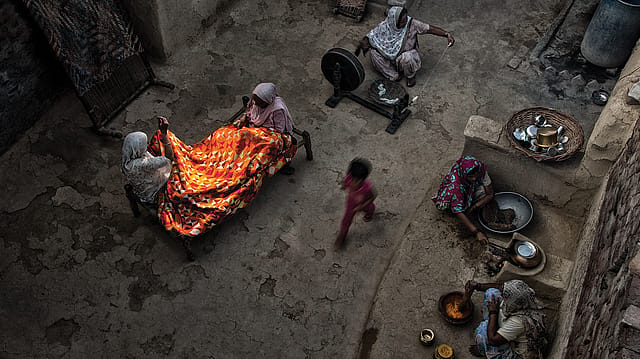When Google meets Indian crafts
ADVERTISEMENT

This essay began when I woke up a few days ago to a WhatsApp message from Jaya Jaitly who has spent a lifetime working to promote Indian crafts as founder of Dastkari Haat Samiti. She told me about Google’s latest initiative under its arts and culture programme called Crafted in India.
Expanding on its vision of making all the knowledge in the world available freely on the Internet, Google, it turned out, had partnered with Dastkari Haat Samiti and the national tourism campaign Incredible India, to create an online platform full of beautiful images and videos to encourage and assist in the discovery of India’s vast heritage in handicrafts.
Now, having written Fortune India’s luxury issues and two books on the subject in the past 10 years, I have seen that Indian handicraft suffers from too little appreciation within the country. In fact, as I have noticed again and again in the ateliers of Hermès and the showrooms of Bond Street, it is often outside India where there is greater willingness-to-pay, as they taught us in microeconomics, for crafts from India.
December 2025
The annual Fortune 500 India list, the definitive compendium of corporate performance, is out. This year, the cumulative revenue of the Fortune 500 India companies has breached $2 trillion for the first time. Plus, find out which are the Best B-schools in India.
The problem is simple: Indians, especially young Indians, have never been taught to appreciate the magic of handmade goods made in their country. Most of us grew up after liberalisation in 1991 when India opened up its economy to the world—a time marked by a lust for branded goods from outside India reinforced by Hindi cinema. I once created a lecture which I delivered at the National Institute of Fashion Technology which pointed out that one could tell the story of the unfolding of India’s economic liberalisation from 1991 onwards just by tracing the clothes and brands that Shah Rukh Khan wore in his movies, say from Dil Toh Pagal Hai (1997) to Kabhi Alvida Naa Kehna (2006). But what was missing in this style euphoria is learning to love the crafts heritage of the country. It was never clear why and when we learnt to describe our own clothes and crafts as ethnic and convert them into costumes. It was also never quite clear why, while we were ever so eager to pay a premium for ‘bespoke’ or ‘handmade’ goods from other parts of the world, this premium was never (or rarely) available to makers of handicrafts at home, in the villages and towns of India.
But times are changing. Having expanded its economy nine times since 1991, Indians are looking inwards these days, rediscovering that which is unique. There is unprecedented enthusiasm for the indigenous products as seen from the success of the Khadi and Village Industries Commission (KVIC) whose turnover crossed ₹74,323 crore ($10.38 billion) in FY19, rising 145% since 2014.
Also, e-commerce giants are rushing to bring on board unprecedented numbers of small and medium-sized sellers. Earlier this year, Amazon has launched Amazon Karigar which has more than 55,000 products of handicrafts including 270 special products unique to 20 states in the country. Amazon has also started a Kala-Haat initiative which is already helping 2,400 artisans, cooperative bodies of craftspeople and weavers market and sell effectively online. Flipkart, now owned by Walmart, is not being left behind. It has its own Samarth programme to bring on board thousands of crafts makers assisting them with technology and logistics to start selling effectively online.
So, Google’s endeavour comes at a point where the tide might be turning towards a quantum jump in domestic sales of crafts. Crafted in India brings into focus more than 50 varieties from all over India, from the Sozni embroidery of Kashmir to Kilim carpets in Mirzapur, from the copper vessels made in the sleepy bylanes of Pune to the Telia Rumal from Telangana. It tells the story behind each product through the voice of the people who make them. With 280-plus exhibits and 11,000-plus images and videos, it shows how and why each craft is unique, the painstaking hours that go into making it by hand, and the love and devotion of the maker for his vocation.
All of this is now readily available, for free, for anyone to see, read and share. Could this be that moment when, finally, we, in our millions, fall in love with our magical handicrafts? Could this be the moment when we make them go ‘viral’? I hope so.
